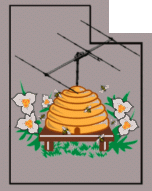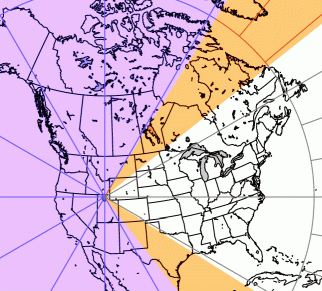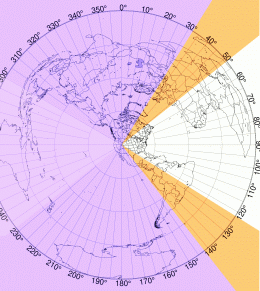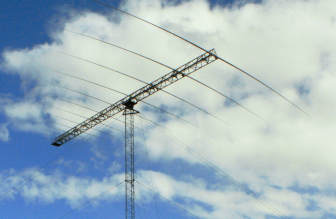 |
| Utah SDR WX |
|
Help support this WebSDR via PayPal - or check, cash, etc. if you don't wish to use PayPal. Find out how!
|
The
Northern Utah WebSDR now has a YouTube channel - see it here! |
40-10 Meters - East-pointing beam
Eastern U.S. and Canada, Africa, Southern Europe
|
This WebSDR is located near Corinne, Utah, about 80 miles (94km) north of Salt Lake City and about 14 miles (23km) east of the Golden Spike National Historic Site.
The Northern Utah WebSDR system has coverage on all U.S. amateur HF, MF and LF bands, 2 meters, the bottom 1 MHz of 6 meters, and several shortwave broadcast bands - see the Technical Info page for more details.
This WebSDR (#4) covers the 40-10 meter amateur bands in their entirety.
The receivers on this server (WebSDR #4) are connected to a log-periodic antenna (Hy-Gain - now U.S. Antenna Products - LP-1002) at 82 feet (25 meters) that covers 6 MHz through 40 MHz.
The antenna is on an 87° (relative to true North) heading which is optimized for covering the eastern half of the United States.
Farther abroad, the global coverage of this antenna includes Africa, the Caribbean, eastern South America (e.g. Brazil) with the Middle East and the Mediterranean at the northern periphery. Under certain conditions, Australia and New Zealand may be audible via "long path". Please note that this antenna is NOT rotatable - and it will never be!
White: -3dB Beamwidth (>= 10dBi)
Yellow: -10dB beamwidth (>=3dBi)
Magenta: Gain: <=3dBi Peak gain of antenna: 13dBi The above is informational - you will still be able to hear signals outside the pattern of the antenna. Click on any of the above images for a larger version. Maps courtesy NS6T's web site. The 2021/2022 User Survey has finished and you may see the results here. |
To invoke this page with a preset frequency and mode, append "/?tune=(freq
kHz)(mode)" to the URL and save it as a bookmark as in: http://[WebSDR's URL]?tune=7200lsb
Additional URL parameters are described on the "FAQ" page here.
If you find that CatSync doesn't work with this WebSDR, add "?10hz" to the URL. There may be other issues with CatSync - read here. Remember: If you don't do something (e.g. retune, adjust bandwidth, volume) this WebSDR will time out after 120 minutes. If it does time out, refresh the browser.
Does the echo of your transmitted audio from the WebSDR drive you crazy? This circuit may help! 
Ever wonder where some of those loud static crashes are coming from? A look at the blitzortung.org U.S.A. lightning map may help answer the question! |
||||||
| Other WebSDR systems:
Western U.S.: KFS, Half-Moon Bay, CA
Eastern U.S.: K3FEF, Milford, PA, NA5B near Washington DC, N4BBQ, Dalhonega, GA |
More
information about the WebSDR project, including a list of WebSDRs worldwide, can be found at http://www.websdr.org.
|
| The Northern Utah WebSDR Landing Page
Everything you wanted to know about the Northern Utah WebSDR system! |
||
| About this WebSDR and contact info
and Terms and Conditions of use |
||
| Technical Information | ||
| Latest News and known issues | ||
| Northern Utah WebSDR FAQ | ||
| Scientific Research | ||
| Are you having audio problems? Click here! | ||
|







![[scale]](smeter1.png)